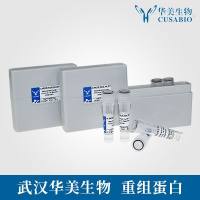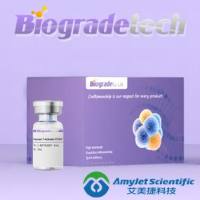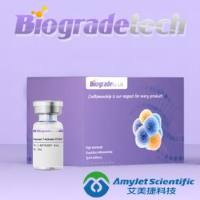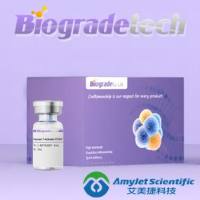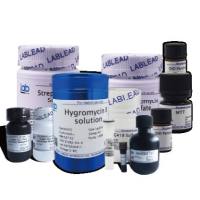Anderson Lab In Situ Hybridization Protocols
互联网
Anderson Lab In Situ Hybridization Protocols
March 1995
These protocols describe non-radioactive methods for in situ hybridization on frozen sections, whole mount embryos and on cultured cells. They have been freely adapted and modified to greater or lesser extents from the protocols of Richard Harland, David Wilkinson, Domingos Henrique, Andy McMahon, Tony Campagnioni, and others. We wish to thank Eric Mercer, Lukas Sommer, Lisa Banner, Joe Verdi, Susan Birren and especially Li-Ching Lo for their efforts in designing and troubleshooting the protocols.
The protocol for in situs on cultured cells is still being optimised, but the current version is the best we have working so far.
Any queries, comments or suggestions should be directed to Andy Groves at grovesa@starbase1.caltech.edu
Good Luck!
Andy Groves
c/o David Anderson Lab
Division of Biology, 216-76
California Institute of Technology
Pasadena CA 91125
I: In Situ Hybridization of Frozen Sections
Sections are collected on RNAse - free slides coated with TESTA, dried in air for two hours and then stored at -20deg.C. It is sometimes necessary to wash the slides in DEPC-PBS and three changes of DEPC-water before storing at -20deg.C. This depends on both the probe and embedding material used. Details of how to prepare RNAse - free slides are in the Appendix.
A: Pre-Treatment of Sections
- Warm slides to room temperature and dry at 50deg.C for 15 minutes.
- Fix in 4% paraformaldehyde in DEPC-PBS at room temperature for 20 minutes.
- Wash twice in DEPC-PBS at room temperature for 5 minutes.
- Treat slides with 50ug/ml Proteinase K in PK buffer at room temperature for between 8-15 minutes depending on the age of the embryo.
- Wash once in DEPC-PBS at room temperature for five minutes. Fix in 4% paraformaldehyde in DEPC-PBS for 15 minutes. Rinse once in DEPC-water.
- Place slides in an RNAse-free glass trough with a stir bar. Add 250ml 0.1M RNAse-free triethanolamine-HCl pH 8.0. Add 0.625ml acetic anhydride (CARE!) with constant stirring. Turn off stirrer when the acetic anhydride is dispersed and leave for a further 10 minutes.
- Wash slides in DEPC-PBS at room temperature for five minutes.
- Prehybridise for 3-4 hours at 60deg.C. Replace with 1-2ug/ml of probe and continue incubation for a further 12-16 hours.
N.B. We have found that the most effective way to carry out the hybridisation is in slide mailers. It is a good idea to thoroughly seal the lids of the slide mailers with parafilm to prevent evaporation of probe.
B: Washing Steps
N.B. After hybridisation, it is not necessary to use RNAse-free buffers.
- Place slides in a trough with a stir bar. Wash in 1xSSC at 60deg.C for 10 minutes.
- Wash in 1.5xSSC at 60deg.C for 10 minutes. Cool slides to 37deg.C.
- Wash twice in 2xSSC at 37deg.C for twenty minutes each.
- Treat with 0.2ug/ml RNAse A in 2xSSC at 37deg.C for 30 minutes.
- Wash in 2xSSC at room temperature for 10 minutes.
- Wash twice in 0.2xSSC at 60deg.C for 30 minutes each.
- Wash twice in PTw at 60deg.C for 10 minutes each.
- Wash in PTw for 10 minutes at room temperature, followed by PBT for 15 minutes at room temperature.
- Incubate slides in 20% heat-inactivated sheep serum in PBT for between one and five hours at room temperature. For some probes, the longer incubation seems to cut down on background.
C: Antibody Visualisation of Digoxygenin
- Incubate slides with pre-absorbed anti-digoxygenin antibody (coupled to alkaline phosphatase) diluted to a final concentration of 1:2000 in 20% sheep serum in PBT at 4deg.C overnight.
- Wash three times in PBT at room temperature for 30 minutes each.
- Wash twice in Alkaline Phosphatase buffer (first wash without levamisole, second wash with) at room temperature for 5 minutes each.
- For every ml of Alkaline Phosphatase buffer, add 4.5ul of NBT and 3.5ul of BCIP, and develop in the dark for between 2-20 hours, depending on the abundance of the RNA. Wash slides with PBS. Since the alkaline phosphatase enzyme is very stable, it is possible to wash out the NBT/BCIP, replace with alkaline phosphatase buffer , and to continue the reaction at a later time.
- Fix slides in MEMFA for at least 15 minutes at room temperature. Mount slides.
II: Whole Mount In Situ Hybridization.
Embryos should be dissected free of any extra-embryonic membranes, fixed in 4% paraformaldehyde in DEPC-PBS for 2 hours at room temperature (or 4deg.C overnight), washed in DEPC-PBS, and then stored in 100% methanol at -20deg.C until required. It may be necessary to partially dissect the embryos (especially the hindbrain region) or puncture them with a fine needle to allow free exchange of reagents.In general, we do the washes and incubations in 15 ml tubes containing about 5-6 ml liquid. The tubes are rocked gently on a rotating platform to allow thorough exchange of solutions.
A: Pre-Treatment of Embryos
-
Rehydrate the embryos in:
-
-
- 75% MeOH : 25% PTw 5 minutes at room temperature
- 50% MeOH : 50% PTw
- 25% MeOH : 75% PTw
- 100% PTw
-
-
-
- 75% MeOH : 25% PTw 5 minutes at room temperature
- 50% MeOH : 50% PTw
- 25% MeOH : 75% PTw
- 100% PTw
-
- Wash twice in PTw for 5 minutes each.
- Treat embryos with 10ug/ml proteinase K in PTw for 15-60 minutes. This is a critical step, as over-digestion will destroy the embryos, and under-digestion will give a poor signal. Exact times should be determined for each embryo species and age. Treat the embryos very gently after this step until they are re-fixed.
- Rinse once gently in PTw. Re-fix embryos in 4% paraformaldehyde + 0.1% glutaraldehyde for 20 minutes at room temperature.
- Wash twice in PTw for five minutes each at room temperature.
- Transfer embryos to a 2ml Eppendorf tube. Remove as much liquid as possible, taking care to avoid damaging the embryos. It's better to remove too little than too much. Replace with 1 ml hybridisation mix. Remove this mixture and replace with fresh hybridisation mix.
- Pre-hybridise the embryos at 70 deg.C for between 1 and 3 hours. Add probe to a final concentration of about 1ug/ml, and hybridise overnight at 70deg.C.>
B: Washing Steps
- Rinse twice with pre-warmed (70deg.C) hybridisation mix.
- Wash twice with pre-warmed hybridisation mix for 30 minutes each at 70deg.C.
- Wash with a 1:1 mixture of hybridisation mix and TTBS (pre-warmed) at 70deg.C for 20 minutes.
- Rinse three times with TTBS. Wash twice with TTBS for 30 minutes each at room temperature.
- Block embryos with PBT containing 10% sheep serum for three hours at room temperature.
C: Antibody Visualisation of Digoxygenin
- Incubate with pre-absorbed anti-digoxygenin antibody diluted to a final concentration of 1:2000 at 4deg.C overnight.
- Rinse three times with TBST.
- Wash three times with TBST for one hour each. If the embryos are large, a further wash overnight at 4deg.C will help cut down background.
- Wash twice with Alkaline Phosphatase buffer for one hour each.
- For every ml of Alkaline Phosphatase buffer, add 4.5ul of NBT and 3.5ul of BCIP, and develop in the dark for between 2-20 hours, depending on the abundance of the RNA. The product should usually be visible in an hour or two.
- When the reaction has proceeded to your satisfaction, it is imperative to quickly stop the reaction to prevent excess background. Wash twice in alkaline phosphatase buffer for five minutes each, and then wash at least three times in PTw buffered to pH 5.5 for 1 hour each in the dark, and then fix in MEMFA for an hour. After this, the embryos can cleared in glycerol.
III: In Situ Hybridization on Cultured Cells
This is basically a modification of the whole-mount protocol, taking into account the requirement for less rigorous washing. It evolved for use on cells cultured in 35mm dishes, but can be adapted to coverslips. In general, the signal tends to be come up much more slowly than in either sections or whole mounts.
A: Pre-Treatment of Cells
- Fix in 4% paraformaldehyde in DEPC-PBS at room temperature for 10 minutes.
- Wash three times in DEPC-PBS at room temperature for 5 minutes.
- To 25ml 0.1M triethanolamine, pH8.0, add 62.5ul acetic anhydride and quickly mix until thoroughly dispersed. Incubate cultures in this mixture for 10 minutes at room temperature.
- Wash cultures in 1xSSC for five minutes at room temperature.
- Permeabilise cultures with 0.2M HCl in DEPC-water for 10 minutes, and wash twice in DEPC-PBS for 5 minutes each.
- Pre-hybridize for 6 hours at room temperature. Remove pre-hyb and add probe at a final concentration of between 1 and 2ug/ml. Hybridise overnight at 60deg.C.
N.B. To prevent evaporation, incubate in a tight-sealing tupperware box containing towels soaked in 50% formamide and 5xSSC.
B: Washing Steps
- Rinse cultures in 0.2 x SSC and then wash in 0.2 x SSC at 60deg.C for 1 hour.
- Adjust cultures to room temperature in 0.2 x SSC for 5 minutes.
- Block cultures in 20% sheep serum in PBT for at least one hour at room temperature.
C: Antibody Visualisation of Digoxygenin
- Incubate cultures with anti-digoxygenin antibody (coupled to alkaline phosphatase) diluted to a final concentration of 1:1000 in 20% sheep serum in PBT at 4deg.C overnight, or for two hours at room temperature. It is not necessary to use pre-absorbed antibody, although it doesn't hurt.
- Rinse three times in PBT.
- Wash four times with PBT at room temperature for 10 minutes each.
- Wash twice in Alkaline Phosphatase buffer (first wash without levamisole, second wash with) at room temperature for 10 minutes each.
- For every ml of Alkaline Phosphatase buffer, add 4.5ul of NBT and 3.5ul of BCIP, and develop in the dark for between 2-36 hours, depending on the abundance of the RNA. It may be necessary to wash the cultures and add fresh reaction mixture after 12 hours or so.
- When the reaction has proceeded far enough, wash in PBT, and fix in MEMFA.
Appendix: Additional Techniques
A: Preparation of RNAse - Free Slides
- Soak VWR slides overnight in Dichrol at room temperature in a fume hood. Wash the slides thoroughly to remove any residual Dichrol, rinse for one hour in running water, then for a further hour in running distilled water.
- Dry slides at 150deg.C for 20 minutes.
- Dip slides in a 2% solution of TESTA (3-aminopropyltriethoxysilane; Sigma A-3648)in dry acetone for 5 minutes.
- Wash in 2 changes of acetone and three changes of DEPC-water. Dry overnight at 42deg.C and store dry. TESTA slides should be used within 6-8 weeks, as their adhesive properties tend to fade after this time.
B: Probe Preparation
- Cut between 20 and 40ug of maxi-prep quality plasmid DNA with a five-fold excess of an appropriate restriction enzyme for 2 hours. Check digestion on mini-gel.
- Extract cut template in an equal volume of 50 : 48 : 2 phenol : chloroform : isoamyl alcohol. Spin down, transfer the upper layer to a fresh tube and extract with chloroform : isoamyl alcohol.
- Precipitate upper layer with 1/9 volume of 3M NaOAc and 2 volume ethanol at -80deg.C. Spin down at 4deg.C for 15 minutes. Wash pellet with 70% EtOH and spin again. Resuspend pellet in 20ul of RNAse-free TE, and store at 4deg.C until required.
-
Set up the following reaction in 50ul total volume:
-
-
- 5x Stratagene synthesis buffer 10ul
- 1M DTT (RNAase free) 0.5ul
- 10mM NTPs/digoxygenin-UTP 2.5ul
- RNAsin 10 units
- RNA polymerase (T3, T7 or Sp6) 90 units
- DNA template 2.5ug
- DEPC-water to 50ul
-
-
-
- 5x Stratagene synthesis buffer 10ul
- 1M DTT (RNAase free) 0.5ul
- 10mM NTPs/digoxygenin-UTP 2.5ul
- RNAsin 10 units
- RNA polymerase (T3, T7 or Sp6) 90 units
- DNA template 2.5ug
- DEPC-water to 50ul
Incubate at 37deg.C for 2 hours.
-
- Remove 2ul for mini-gel sample. Add 20 units of RNAse-free DNAse and continue incubation for a further 10 minutes at 37deg.C. Remove a second 2ul sample and check that DNA has been degraded on a 1% TBE mini-gel.
- Add 52ul of 'Stop' buffer to the reaction.
- Separate unincorporated ribonucleotides on a Sephadex G50 spin column by spinning for 2 minutes on setting 5 on the Anderson Lab benchtop centrifuge. (Modify as necessary).
- Transfer the purified probe to a clean tube. Add 1/9 volume of 3M NaOAc, pH4.8 and 2 volumes of ethanol. Precipitate at -80deg.C for 10 minutes. Spin down at 4deg.C for 15 minutes, wash the pellet in 95% EtOH/5% DEPC-water and spin again for 5 minutes.
-
Resuspend the pellet in 50ul of an RNAse-free solution of 40mM NaHCO3 / 60mM Na2CO3. Remove a 1ul sample for OD260 measurement. Incubate at 60deg.C for 35 minutes to hydrolyse the probe into small fragments (between 200-300 bp). 35 minutes works fine for a 1kb probe. For other probe sizes, use the following formula:
The amount of time, t , for hydrolysis in 40mM NaHCO3 / 60mM Na2CO3 at 60deg.C is given by:
(Starting length, kb) - (Desired length, kb) -------------------------------------------------- = t (0.11) (Starting length, kb) (Desired length, kb)
- Precipitate hydrolysed probe again as in (8) above. Resuspend the probe in hybridisation buffer to a final concentration of 10ug/ml. N.B. Resuspend in a small volume first, then make a final dilution.
- Store probe at -20deg.C until required. Probes should stay stable for months on end.
C: Sephadex G-50 Spin Column
- Suspend Sephadex G-50 in distilled water. DEPC-treat overnight and autoclave. Let Sephadex settle out, and replace water with RNAse-free 0.3M NaOAc pH 6.0/ 0.1% SDS.
- Pack the base of a 3ml syringe with glass wool that has been siliconised with "Sigmacote" and autoclaved. Handle wool with autoclaved forceps.
- Load 5ml of G-50 slurry onto the column and spin down. (3 minutes at setting 5 on IEC Clinical benchtop centrifuge - modify as necessary).
- Remove buffer from tube and replace with a clean Eppendorf tube. Column is now ready for use.
D: Pre-absorbing Anti-Digoxygenin Antibody
- Fix a series of rat/chick E12.5 - E13.5 embryos in 4% paraformaldehyde for 2 hours at room temperature. Use about 8 rat embryos for every ml of 1:200 antibody. Wash with PBS and store at -20deg.C in methanol.
-
Rehydrate in:
-
-
- 75% MeOH : 25% H2O 5 minutes at room temperature
- 50% MeOH : 50% H2O
- 25% MeOH : 75% H2O
- 100% PTw
-
-
-
- 75% MeOH : 25% H2O 5 minutes at room temperature
- 50% MeOH : 50% H2O
- 25% MeOH : 75% H2O
- 100% PTw
-
- Dissociate embryos with a syringe and incubate in 10% heat inactivated serum in PTw for one hour at room temperature. Spin down and discard supernatant.
- To the minced embryos add an equal volume of 1:200 anti-digoxygenin antibody in PTw containing 1% serum. Incubate for three hours at room temperature on a rotary wheel.
- Spin down the embryos, recover supernatant and dilute to 1:1000 with PBT containing 20% serum.
N.B. Use a serum species compatible with the antibodies you are using. The Boehringer anti-DIG antibodies are made in sheep.
E: Pre-absorbing Anti-Digoxygenin Antibody - Embryo Powder Method
This is an alternative to the protocol above, which may be more convenient for small batches of antibody.
- Homogenise embryos of an appropriate age and species in a minimum volume of ice cold PBS.
- Add 4 volumes of ice cold acetone, mix well and incubate on ice for 30 minutes.
- Spin pellet out at 10,000g for 10 minutes, wash with ice cold acetone and spin down again.
-
Spread pellet out on filter paper, let it dry thoroughly and grind into a fine powder. Store at 4deg.C.
To produce 2ml of pre-absorbed antibody:
- Weigh out 3mg embryo powder and mix with 0.5ml PBT.
- Incubate at 70deg.C for 30 minutes. Vortex hard for 10 minutes.
- Cool mixture on ice, add 5ul sheep serum and 1ul anti-digoxygenin antibody. Mix for 1 hour at 4deg.C.
- Spin down hard and dilute supernatant to 2ml with PBT containing 1% sheep serum.
Solutions
Stop Buffer
-
- 1% SDS
- 20mM EDTA
- 20mM Tris pH7.5
- 100mM NaCl
-
- 1% SDS
- 20mM EDTA
- 20mM Tris pH7.5
- 100mM NaCl
PK Buffer:
-
- 50mM Tris-HCl pH 7.5
- 5mM EDTA
-
- 50mM Tris-HCl pH 7.5
- 5mM EDTA
1M Triethanolamine, pH 8.0:
Add 66.5 Triethanolamine and 20ml conc. HCl to 413.5ml DEPC-water in an RNAse-free bottle.PTw:
-
- 1xPBS
- 0.1% TWEEN-20
-
- 1xPBS
- 0.1% TWEEN-20
PBT:
-
- 1xPBS
- 2mg/ml BSA
- 0.1% Triton X-100
-
- 1xPBS
- 2mg/ml BSA
- 0.1% Triton X-100
100x Denhardt's Solution
-
- 2% BSA (ICN 810661)
- 2% Polyvinylpyrrolidone (PVP-40)
- 2% Ficoll 400
- Make a slurry in DEPC-water and dilute.
-
- 2% BSA (ICN 810661)
- 2% Polyvinylpyrrolidone (PVP-40)
- 2% Ficoll 400
- Make a slurry in DEPC-water and dilute.
Hybridisation Solution:
For 100ml-
- 50% Formamide 50ml
- 5x SSC 25ml 20xSSC
- 1mg/ml Yeast tRNA 2ml of 50mg/ml in DEPC-H2O
- 100ug/ml Heparin 10mg
- 1xDenhardt's Solution 1ml 100x
- 0.1% Tween 20 (Sigma P-1379) 0.1ml
- 0.1% CHAPS (Sigma C-3023) 0.1g
- 5mM EDTA 2.5ml 0.2M EDTA pH 8.0
-
- 50% Formamide 50ml
- 5x SSC 25ml 20xSSC
- 1mg/ml Yeast tRNA 2ml of 50mg/ml in DEPC-H2O
- 100ug/ml Heparin 10mg
- 1xDenhardt's Solution 1ml 100x
- 0.1% Tween 20 (Sigma P-1379) 0.1ml
- 0.1% CHAPS (Sigma C-3023) 0.1g
- 5mM EDTA 2.5ml 0.2M EDTA pH 8.0
Cheaper Hybridisation Solution for Whole Mounts:
For 100ml-
- 50% Formamide - 50ml
- 1.3xSSC (pH 4.5 with citric acid) - 7.5ml 20xSSC pH4.5
- 50ug/ml Yeast tRNA - 250ul of 20mg/ml in DEPC-H2O
- 100ug/ml Heparin - 10mg
- 0.2% Tween 20 - 0.2ml
- 0.5% CHAPS (Sigma C-3023) - 0.5g
- 5mM EDTA - 2.5ml 0.2M EDTA pH 8.0
-
- 50% Formamide - 50ml
- 1.3xSSC (pH 4.5 with citric acid) - 7.5ml 20xSSC pH4.5
- 50ug/ml Yeast tRNA - 250ul of 20mg/ml in DEPC-H2O
- 100ug/ml Heparin - 10mg
- 0.2% Tween 20 - 0.2ml
- 0.5% CHAPS (Sigma C-3023) - 0.5g
- 5mM EDTA - 2.5ml 0.2M EDTA pH 8.0
NBT:
75 mg/ml Nitro blue tetrazolium in 70% dimethyl formamide and 30% waterBCIP:
50 mg/ml 5-bromo-4-chloro-3-indoyl phosphate in 100% dimethyl formamideTBS:
-
- 500mM NaCl
- 20mM Tris, pH 7.5
-
- 500mM NaCl
- 20mM Tris, pH 7.5
TTBS:
-
- 500mM NaCl
- 20mM Tris, pH 7.5
- 1% Tween 20
-
- 500mM NaCl
- 20mM Tris, pH 7.5
- 1% Tween 20
MEMFA:
-
- 0.1M MOPS pH 7.5
- 2mM EGTA
- 1mM MgSO4
- 3.7% Formaldehyde
-
- 0.1M MOPS pH 7.5
- 2mM EGTA
- 1mM MgSO4
- 3.7% Formaldehyde
Alkaline Phosphatase Buffer:
-
- 100mM Tris, pH 9.5
- 50mM MgCl2
- 100mM NaCl
- 0.1% TWEEN 20
- 5mM Levamisole - add fresh each time.
-
- 100mM Tris, pH 9.5
- 50mM MgCl2
- 100mM NaCl
- 0.1% TWEEN 20
- 5mM Levamisole - add fresh each time.
Reagents, Glassware and Apparatus
- The following solutions can be made up in untreated bottles. Treat with 0.1% DEPC overnight at 37deg.C and then autoclave:EDTA, NaCl, MgCl2, NaHCO3 / Na2CO3, NaOAC
- The following solutions cannot be autoclaved. Make these up in DEPC-treated water in glass bottles that have been baked at 170deg.C for 8 hours, and whose caps have been soaked in water containing 0.1% DEPC overnight at 37deg.c and then autoclaved:
Tris, SDS, Denhardt's, any buffers with Tween, Triton or CHAPS, Hybridisation buffer
- The following solutions do not need to be RNAse free:
TBS, TTBS, PBT, BCIP, NBT, MEMFA, Tris-Imidazole buffer
- PTw for whole mounts and culture
